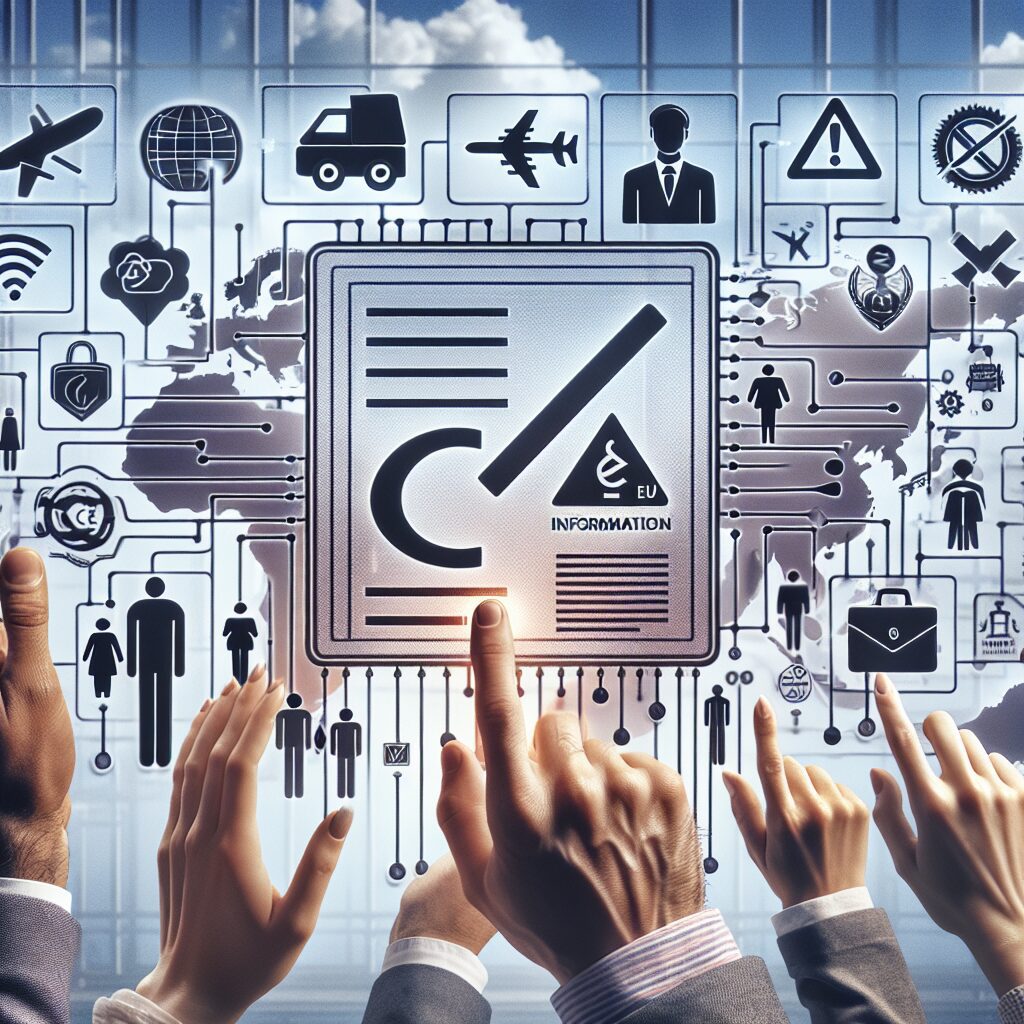About eldris
At Eldris, we automate SEO, multilingual site expansion, and EU compliance for brands scaling across Europe. Our AI-powered platform handles everything from content publishing to regulatory docs—so you don’t have to.
In This Article
- EU product compliance is critical for accessing and maintaining e-commerce sales in the EU.
- Key regulations like GPSR, CE marking, and language laws must be reflected in your listings.
- Assigning a qualified EU Responsible Person is legally mandatory for many products.
- Multilingual labelling must be accurate and country-appropriate—not just auto-translated.
- Leverage tools to manage translations, compliance checks and directive updates efficiently.
- View compliance not as a cost, but as an investment in trust and customer loyalty.
Why EU Product Compliance Matters for E-Commerce
Growing Regulatory Focus on Product Safety
EU product compliance is no longer just a bureaucratic requirement—it’s a competitive necessity for any e-commerce business. With the explosion of cross-border trade and increasing scrutiny from consumer protection authorities, ensuring that your product listings meet all EU regulations is integral to maintaining market access and avoiding stiff penalties. Non-compliance not only risks fines but damages brand reputation and customer trust. European regulators are ramping up enforcement, especially in the digital sphere, where marketplaces can easily overlook safety and labelling requirements. Failing to adhere to compliance protocols can lead to listings being removed, goods being seized at customs, or even full marketplace bans. As a result, companies are recognising the strategic importance of getting their products fully aligned with EU requirements from the outset.

Understanding GPSR and Core EU Regulations
Key Directives and Their Impact on Listings
The General Product Safety Regulation (GPSR), which officially replaced the General Product Safety Directive, forms the cornerstone of EU product compliance. Its purpose is to ensure that products placed on the EU market meet essential safety requirements, regardless of their origin. Under the GPSR, products must not present any risk or only minimum risk, compatible with the product’s use. Sellers must ensure that appropriate documentation, including risk assessments and technical files, are prepared and accessible. Additionally, product listings must reflect accurate and complete information as mandated by several directives such as the Radio Equipment Directive (RED), the Restriction of Hazardous Substances Directive (RoHS), and the Machinery Directive, depending on the category.
“Compliance is not just about market entry—it’s about continual trust and sustainable operations in the EU.”
What to Include in a Compliant Listing
A fully compliant EU product listing must include a range of critical elements. Every listing should clearly present the product’s intended use, manufacturer or importer details, and any applicable warnings. Details such as CE marking (if relevant), batch numbers, and energy ratings must be included if required by category-specific legislation. In addition, relevant documentation such as conformity declarations and user instructions should be easily accessible, often through downloadable links or QR codes. Prices must include all applicable taxes and clear delivery terms. Ethical claims, sustainability assertions, and technical specifications should be truthful, evidence-backed, and in local languages.
Product imagery must match actual items exactly, while promotional language should avoid ambiguity. Misleading claims about certifications, origin, or safety features can be grounds for removal under the EU Unfair Commercial Practices Directive. Keeping listing content consistent between the product page and packaging avoids discrepancies that may raise alarms with customs or consumer authorities.
Role and Responsibilities of the EU Responsible Person
Under the revised GPSR and other regulations, products entering the EU must have a designated EU Responsible Person. Whether that role is fulfilled by an authorised representative, fulfilment service provider, or importer, the responsibilities are substantial. The Responsible Person must ensure the product complies with applicable EU legislation and that technical documentation is readily available for authorities upon request.
This entity also plays a pivotal role in facilitating market surveillance. When notified by authorities, the Responsible Person must cooperate fully, including helping to initiate corrective actions such as product recalls. Their name and contact details must appear both on product packaging and within any digital listings, ensuring transparency throughout the supply chain. For non-EU brands, partnering with a reliable Responsible Person can significantly ease access to the European market.
How to Display Multilingual Label Requirements
A key component of EU product compliance involves language requirements. Each EU member state has its own language rules for consumer-facing information. Therefore, listings must include warnings, safety information, and usage instructions in the official languages of the countries where the products are marketed.
For instance, selling a toy in Germany requires complete labelling in German, while also accommodating regional dialects or consumer nuances if necessary. Automated translations can introduce errors—false claims, wrong dosage instructions, or misrepresented materials—which may invalidate claims altogether. Hence, listings should either include human-reviewed translations or use verified AI solutions tailored to industry-specific terminology.
Ensuring comprehension across markets doesn’t just help you comply; it also improves user satisfaction and lowers return rates. Ultimately, precise localisation boosts conversion metrics while remaining fully aligned with EU legal expectations.
Country-Specific Labelling and Content Formats
It is insufficient to apply a ‘one-size-fits-all’ listing strategy across the EU. Each country has its own nuances when it comes to content formatting and acceptable labelling. For example, France enforces strict requirements around environmental and recycling logos, while Spain mandates displaying manufacturer registration with the national product safety database.
In certain countries like Poland or Hungary, regulator-approved phrasing must be used in health/product claims, especially within fields like nutrition and personal care. The Netherlands obliges detailed allergen information, while Italy stresses dual pricing in Euro and per-kg or per-litre breakdowns.
Non-compliance at the national level can restrict your reach even if you meet overarching EU rules. Using dynamic content management systems that geo-target consumers in real time ensures the right versions of your listings are displayed according to jurisdiction. Expert translation partners can help to localise not just literal text, but also tone and style in culturally sensitive ways.
Checklist: EU Product Localisation Essentials
- Product title, usage, and attributes translated for each target EU country
- Compliance with category-specific directives (e.g., Medical Devices Directive, Toy Safety Directive)
- Presentation of CE marking, applicable symbols, and safety warnings
- Presence of EU Responsible Person’s details in packaging and digital listings
- Declaration of Conformity (DoC) uploaded or visibly referenced
- VAT and delivery information clearly visible at point of sale
- Environmental compliance—WEEE, RoHS, EcoDesign compliance labelling
- Up-to-date contact details for customer support in local language(s)
- Country-specific labelling such as recycling icons or consumer codes
Common Pitfalls in EU Listing Compliance
Despite good intentions, brands frequently overlook technical aspects of EU product compliance. One of the most common mistakes is listing items using machine-translated content with no post-editing. Another is adding the CE mark digitally in listings without verifying actual certification. Some sellers also neglect the technical documentation requirements or fail to update them after product tweaks.
Using ambiguous terms like “eco-friendly” or “medical grade” without substantiating data is risky. Claims must be verifiable, or they may classify the product under a stricter regulatory regime. Sellers also often fail to monitor changes in local regulations, leading to outdated safety notices or product classification mismatches. Furthermore, neglecting to assign a qualified EU Responsible Person exposes a brand legally and tarnishes its credibility.
To avoid these pitfalls, businesses can benefit from setting up periodic audits, automated compliance checks, and working closely with trade consultants who specialise in Learn more about Comprehensive EU eCommerce Compliance for Businesses.
Tools for Automating Translations and Local Checks
Today’s market offers a broad range of automation tools tailored for EU product compliance. AI-powered translation software like DeepL and Smartling offer neural machine translation tuned specifically for commerce and technical content. These can be calibrated with a style guide and glossaries to ensure consistency across product categories.
Furthermore, compliance platforms such as LabelCheck and GS1 Compliance Assistant help brands verify that their labels, packaging and documentation meet country-specific laws. Machine vision AI can review uploaded images to detect issues like missing CE logos or incorrect age recommendations on toys.
Integration with your product information management (PIM) system allows automated syncing of verified localisation data directly into your e-commerce listings. These tools diversify your access to all EU markets simultaneously, streamlining multilingual SKU coordination and Read a related article.
Ensuring Ongoing Compliance with Regulatory Updates
EU product regulations continue to evolve, particularly as sustainability, digital sales, and consumer accessibility become top priorities. For instance, the EU Digital Services Act (DSA) includes provisions affecting how listings must present safety information, return policies, and seller identity.
Staying compliant requires proactive monitoring of changes in the Official Journal of the European Union and by subscribing to trade newsletters or associations. Brands that treat compliance as a static, one-time task often find themselves on the wrong side of sudden legal shifts.
Creating a regulatory change log and designating a cross-functional compliance team ensures timely updates to listings or packaging. Collaborating with Checklist for EU product data rules can also offer external audits or alerts when updated frameworks impact your sector. Ultimately, planning compliance as a continuous process, not a one-off event, guarantees secure and reliable market presence.
Conclusion: Use Listing Localisation to Build Trust
Adhering to EU product compliance isn’t simply a legal tick-box—it’s a strategic investment in brand credibility and consumer confidence. Properly localised, compliant listings show that your business respects consumer rights, safety standards, and market integrity. They reduce the risk of enforcement action, improve listing performance, and allow you to scale internationally with confidence.
From assigning a diligent EU Responsible Person to translating content across multiple jurisdictional languages, each compliance step is a building block toward sustainable market integration. E-commerce sellers who invest the time, tools and expertise into localisation aren’t just selling products—they’re also earning trust in one of the world’s most regulated and respected markets.
Great guide on eu-product-listing-localisation-compliance-guide – Community Feedback
What must I include in a product listing to comply with EU rules?
EU-compliant listings require local language descriptions, legal product identifiers, correct labelling, Responsible Person or importer details, safety info, and proof of conformity to all relevant directives.
Why is localising content necessary for EU compliance?
Localisation ensures all mandatory information is accessible in the local language, reducing customer confusion, preventing regulatory breaches, and building trust with EU consumers.
How does the Responsible Person affect my product listings?
From December 2024, non-EU brands must designate a Responsible Person with contact details clearly shown in listings, enabling authorities and customers to verify compliance and product safety.








